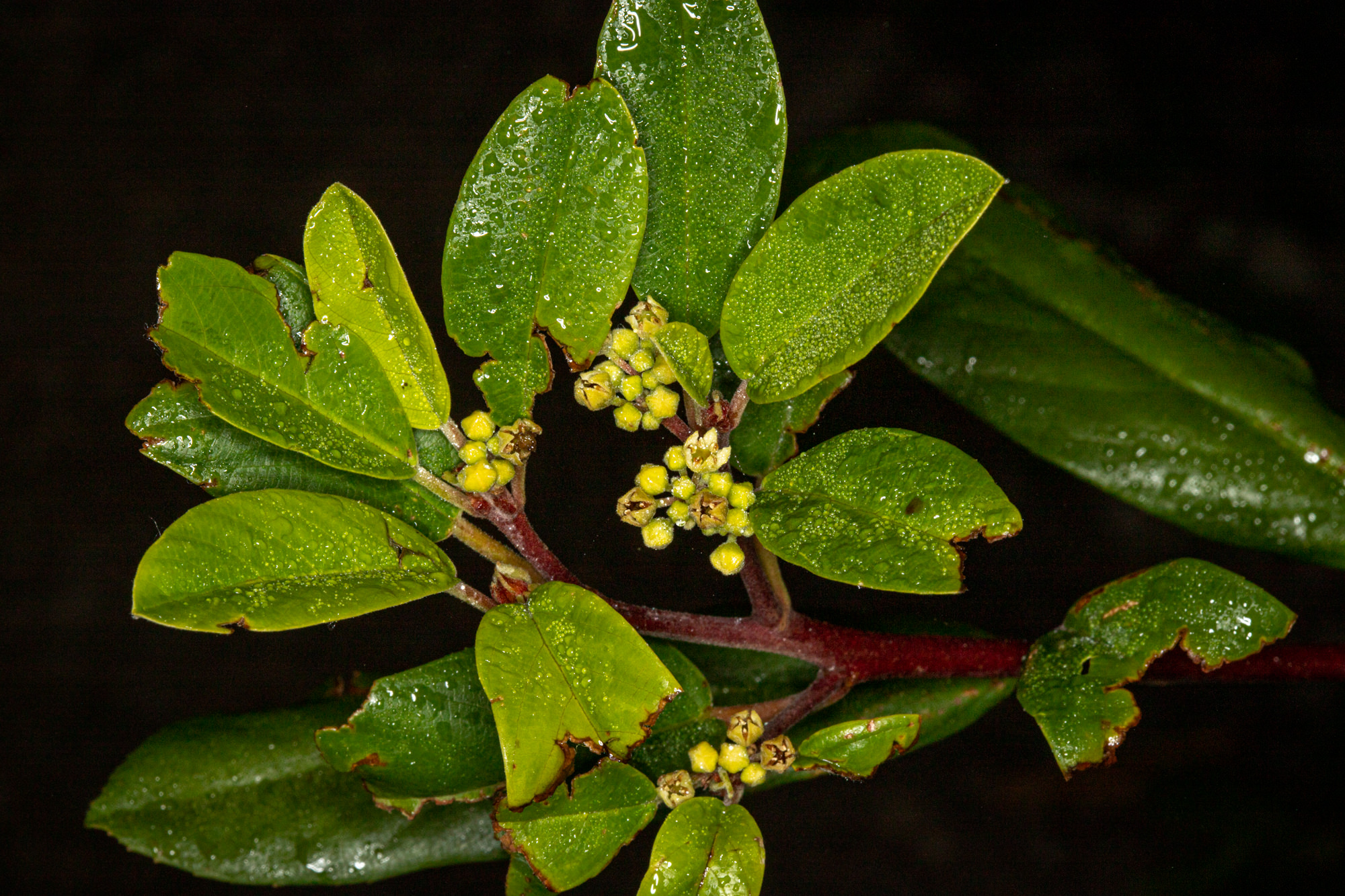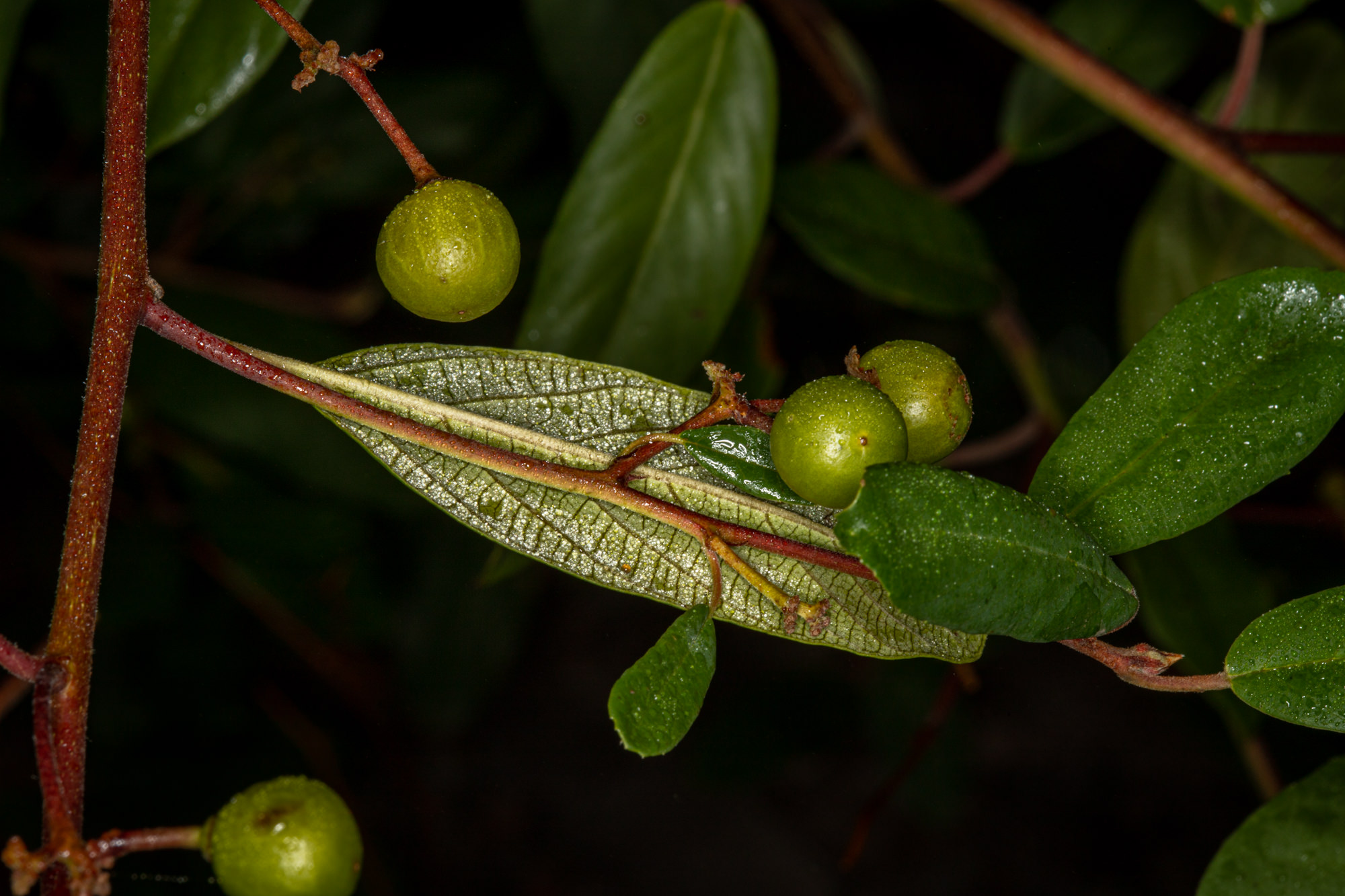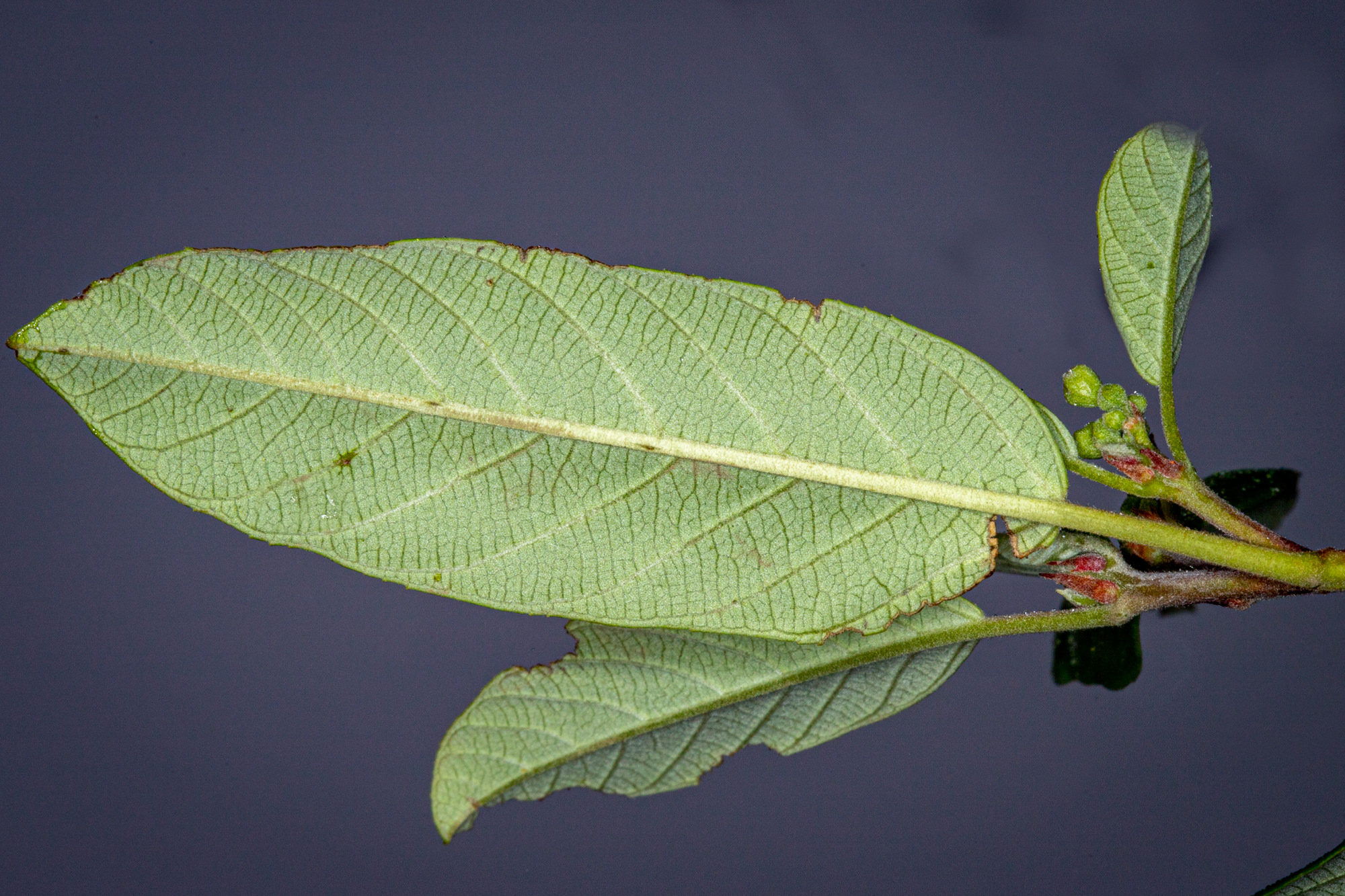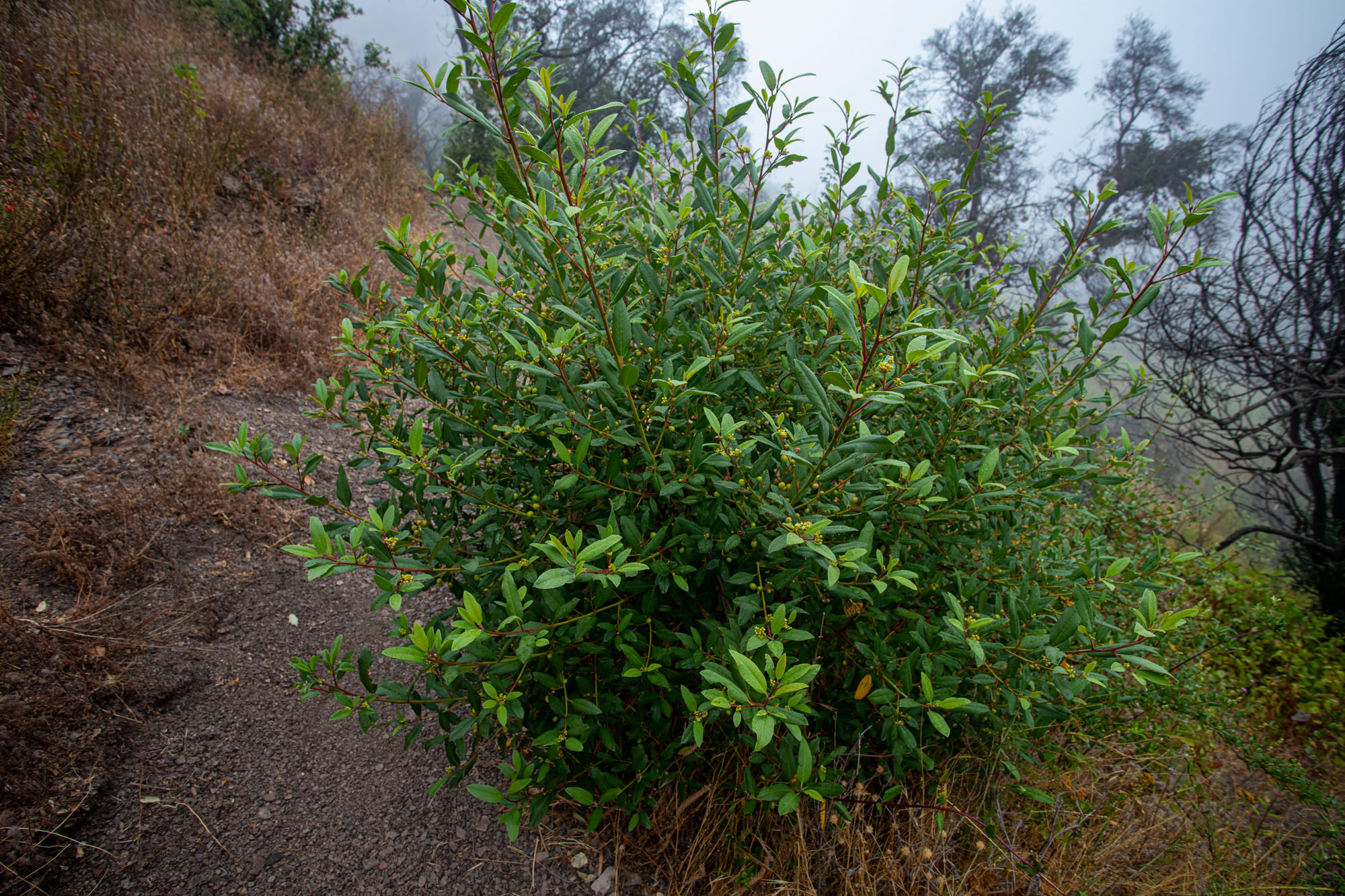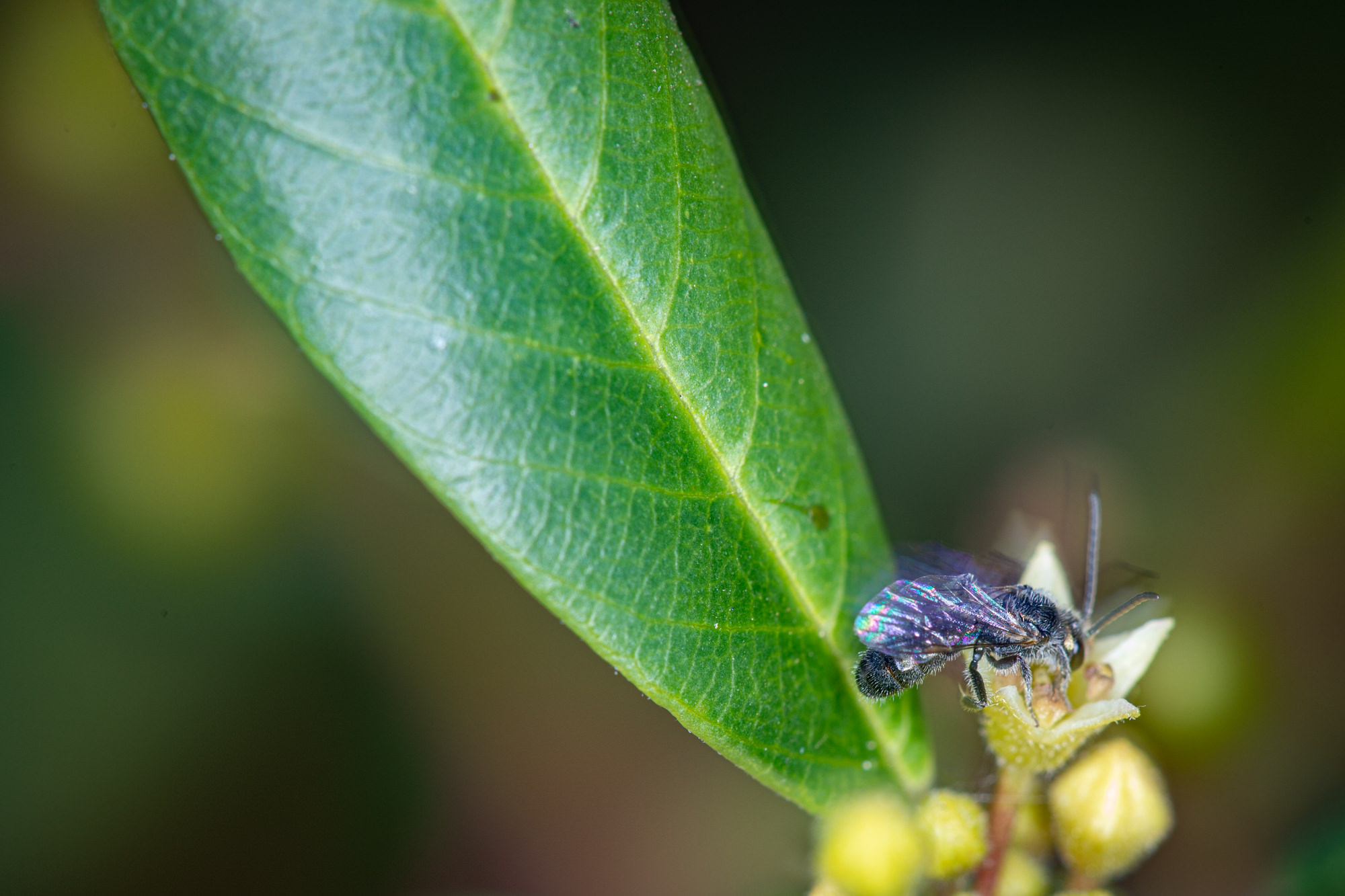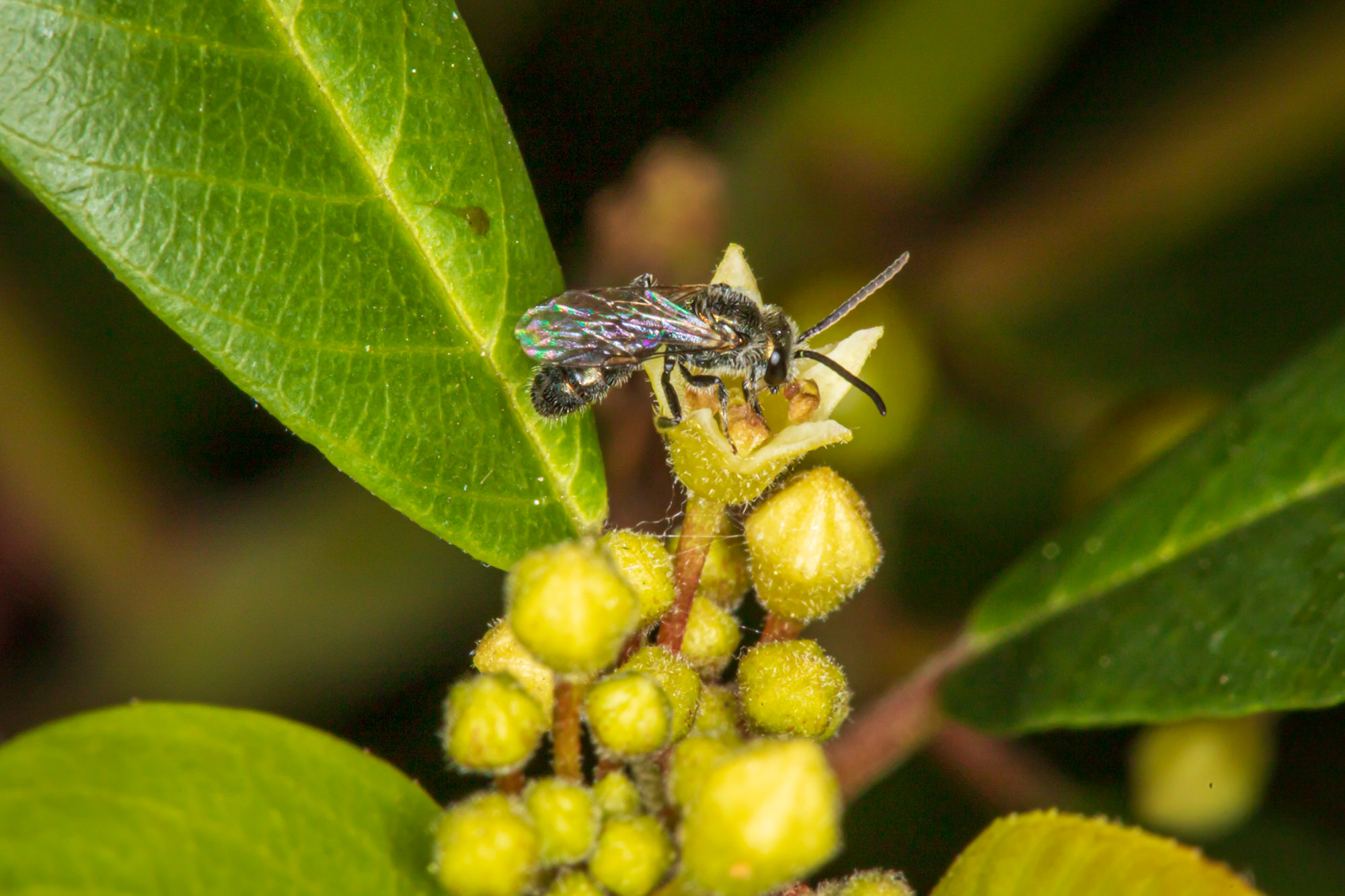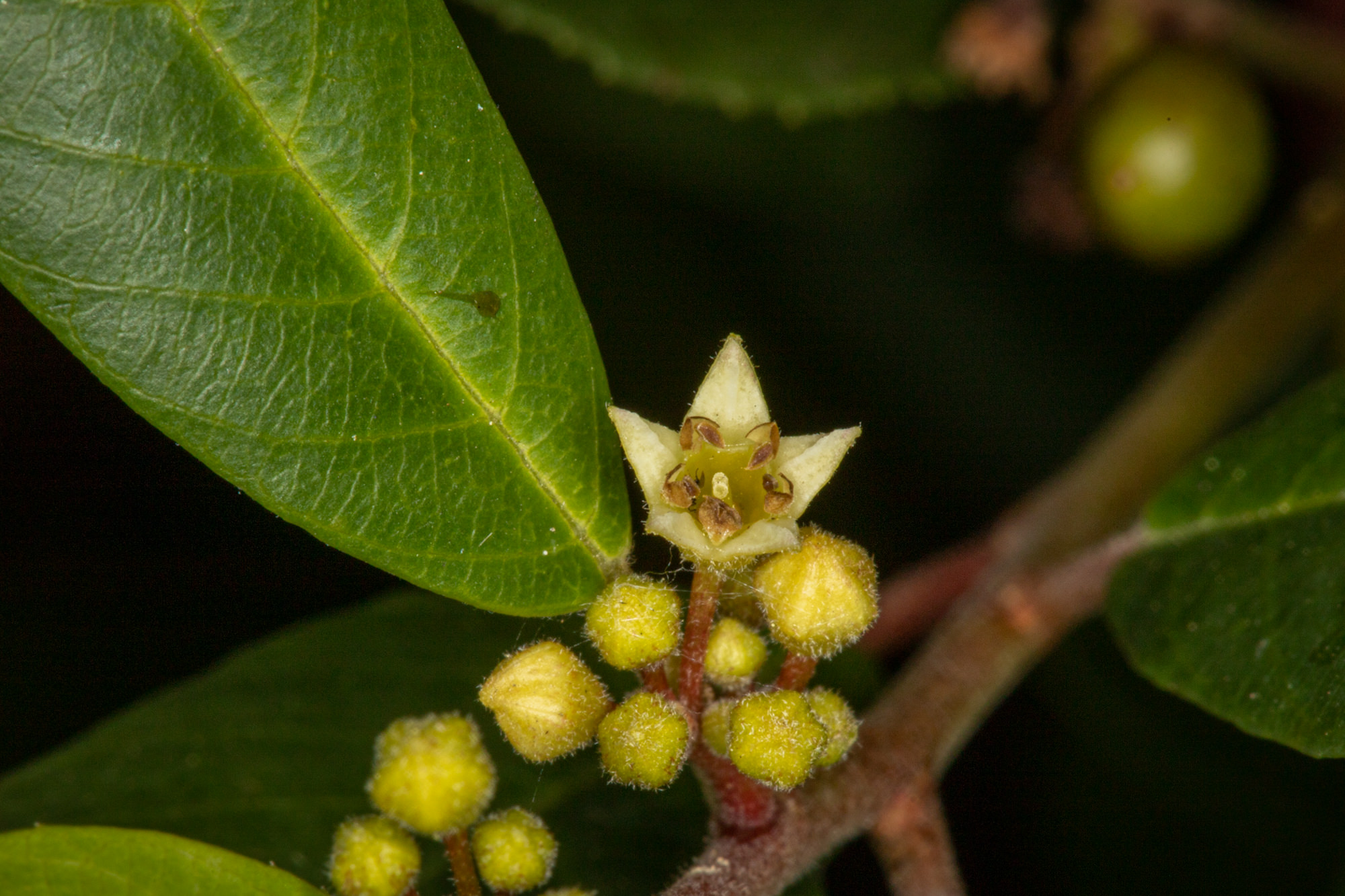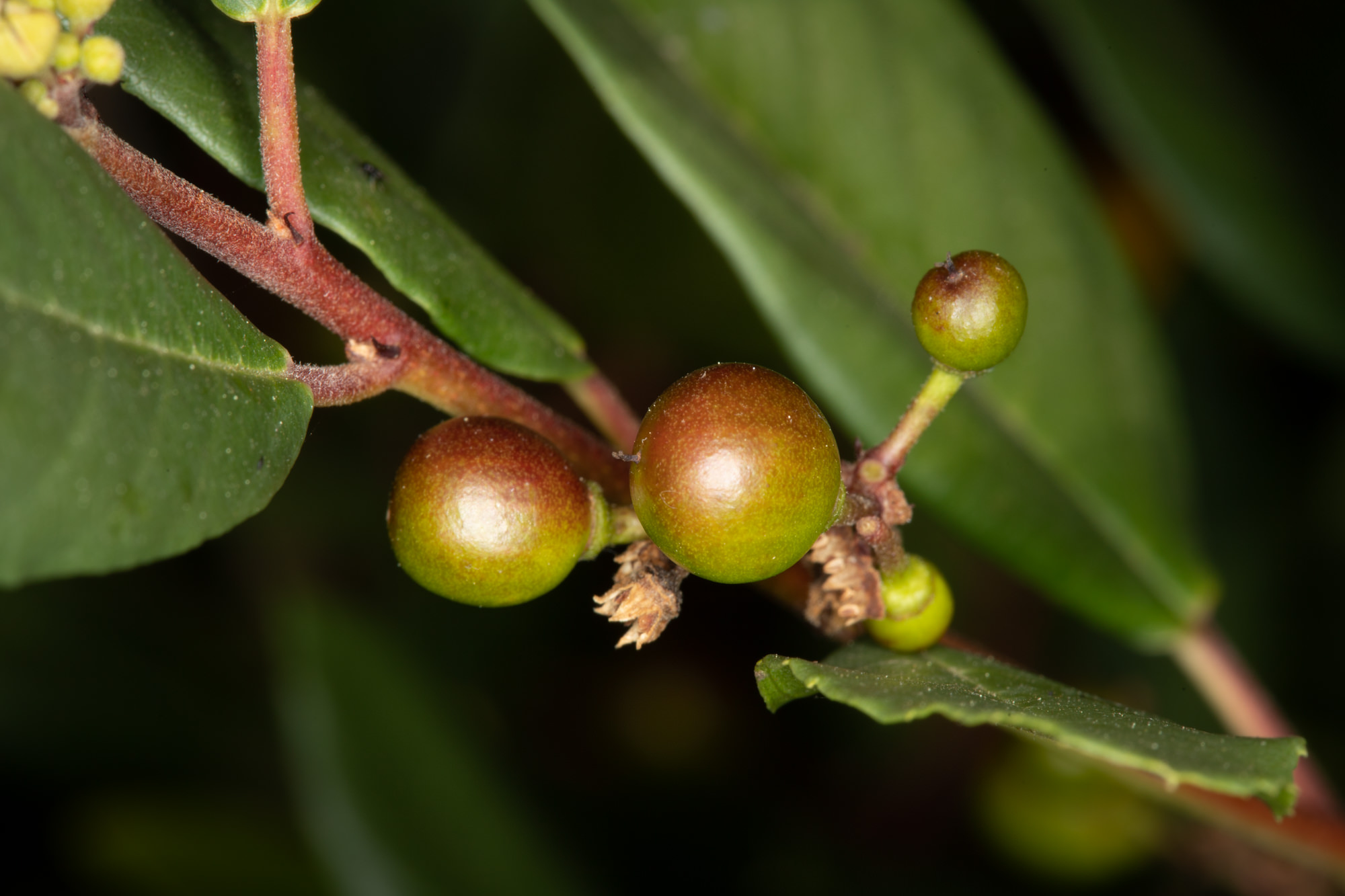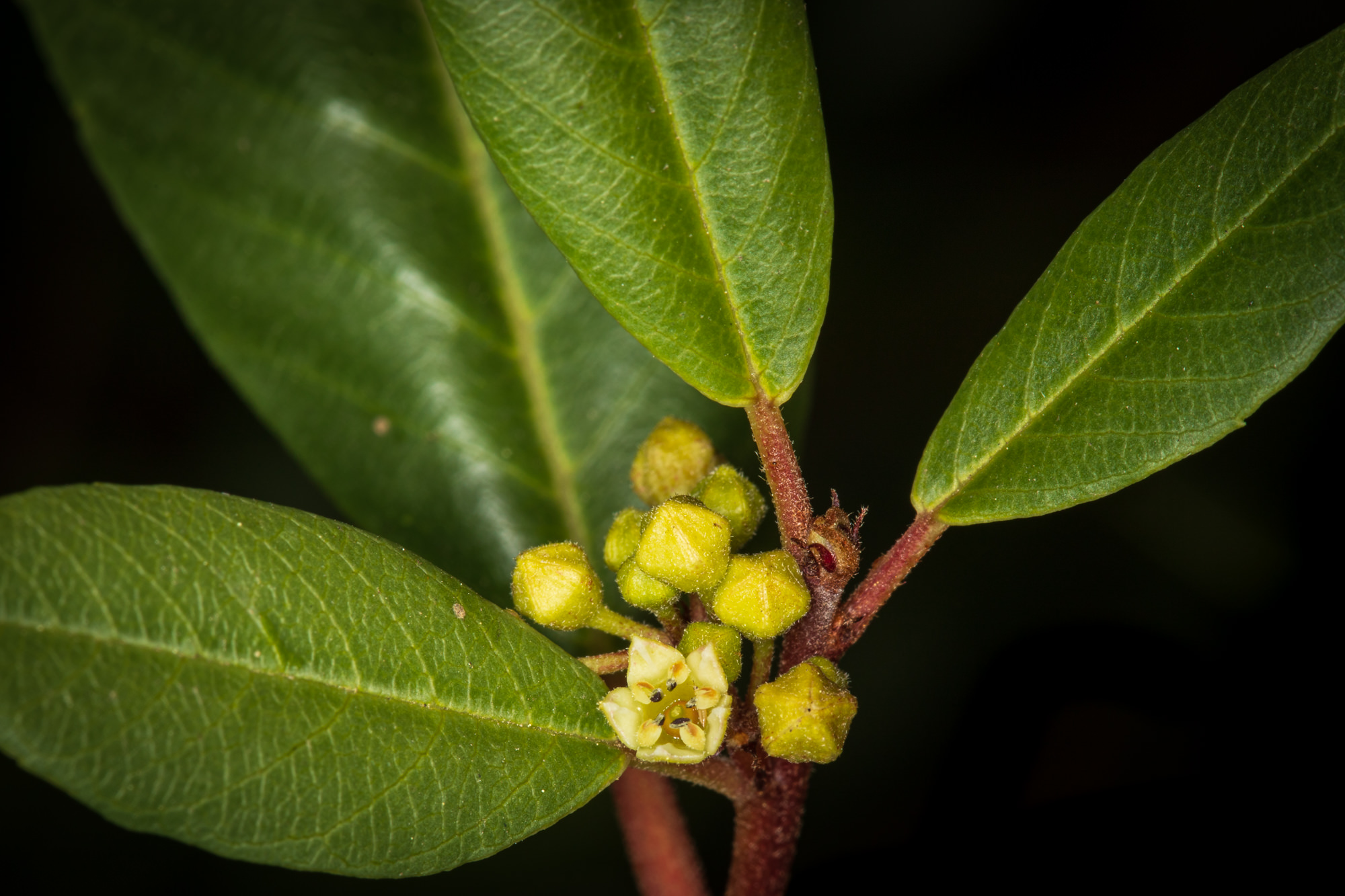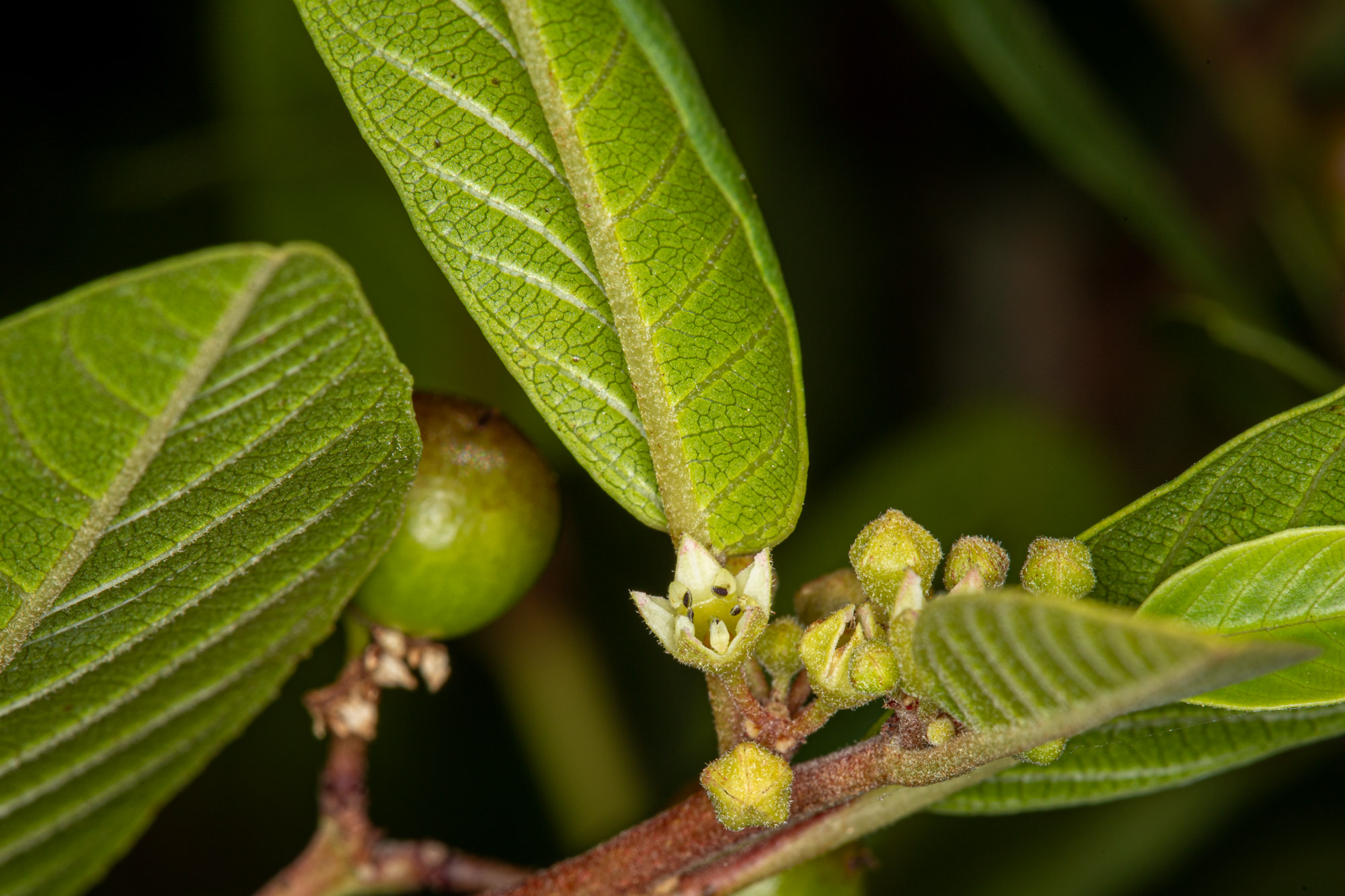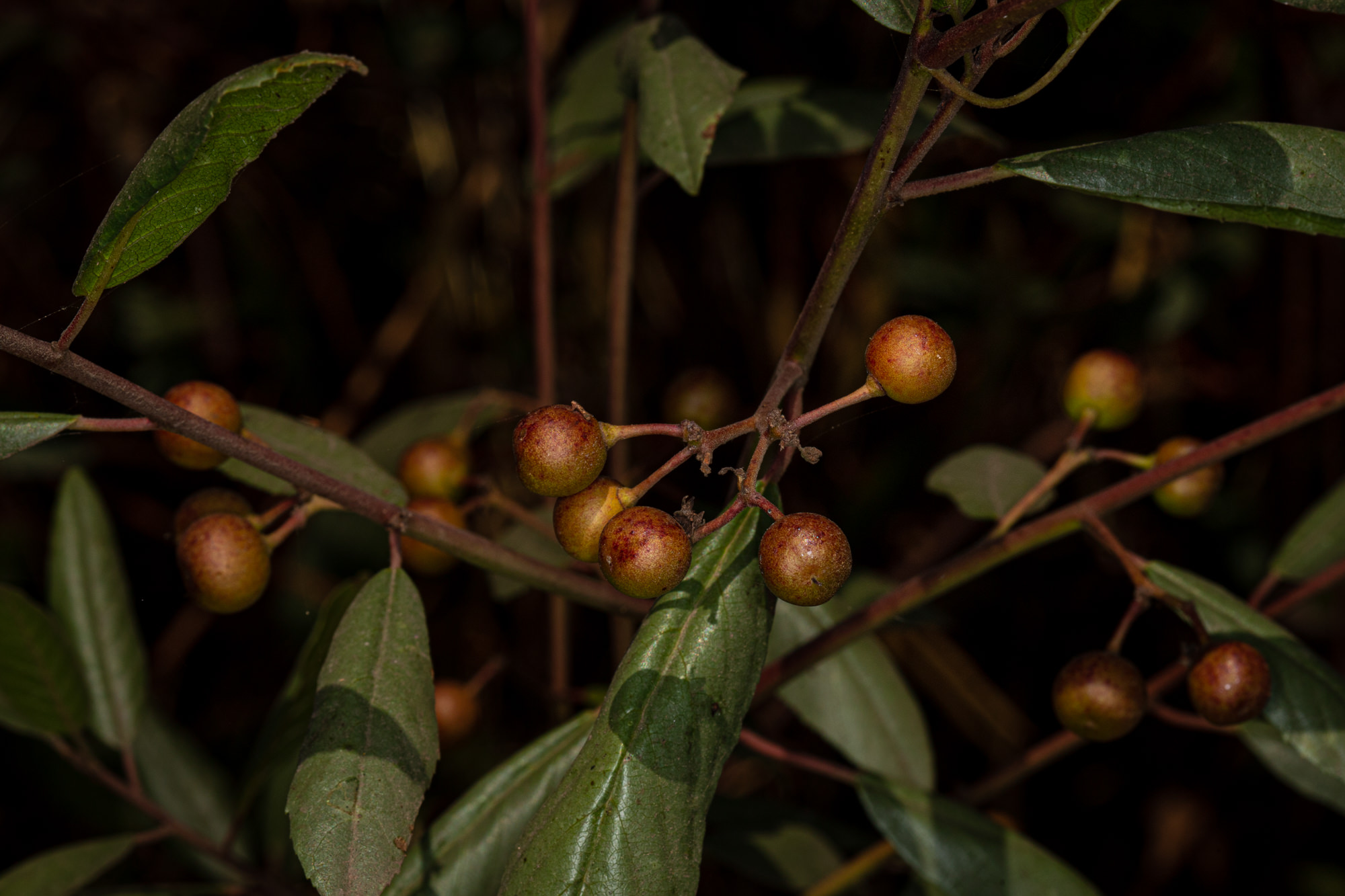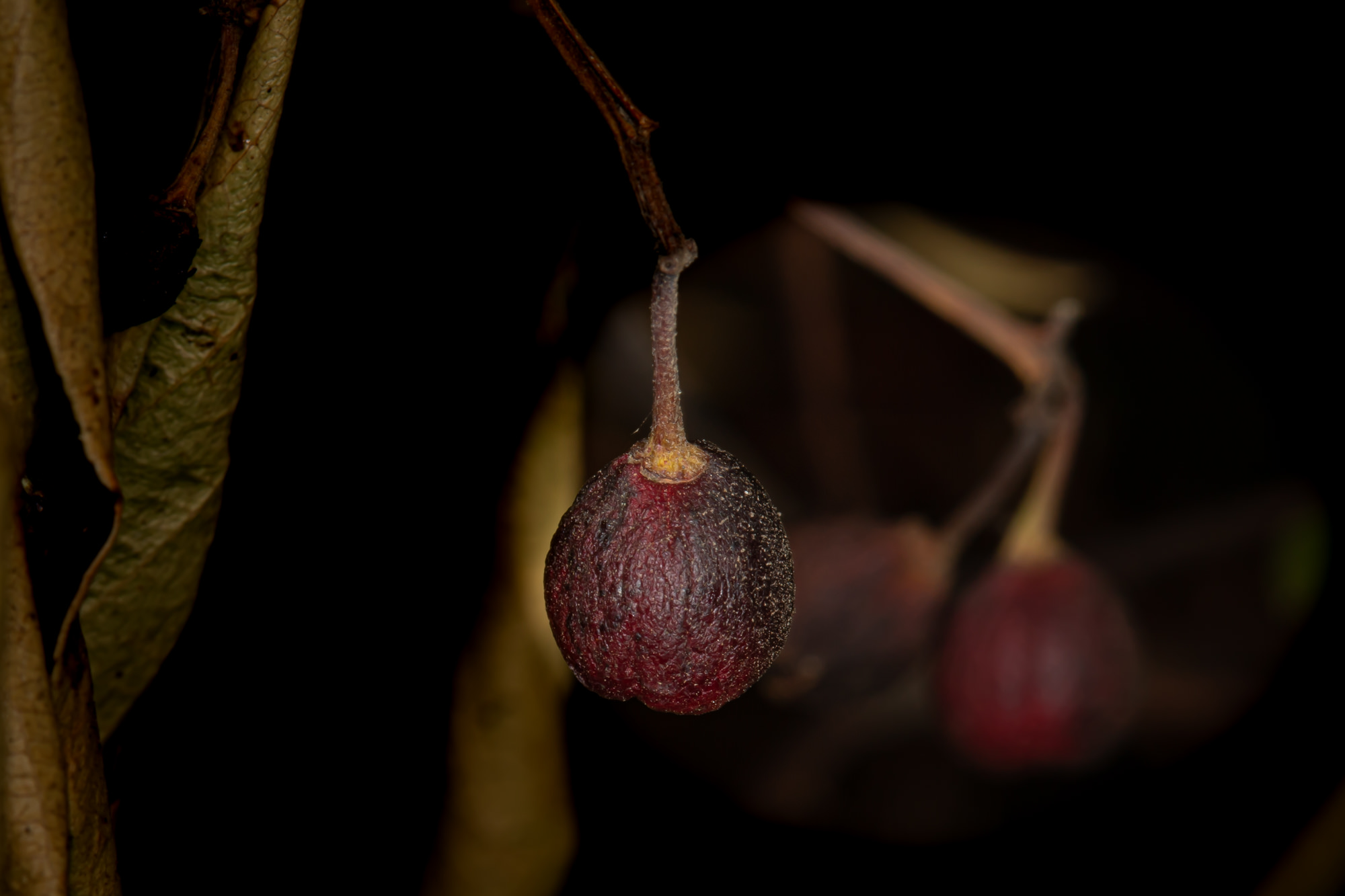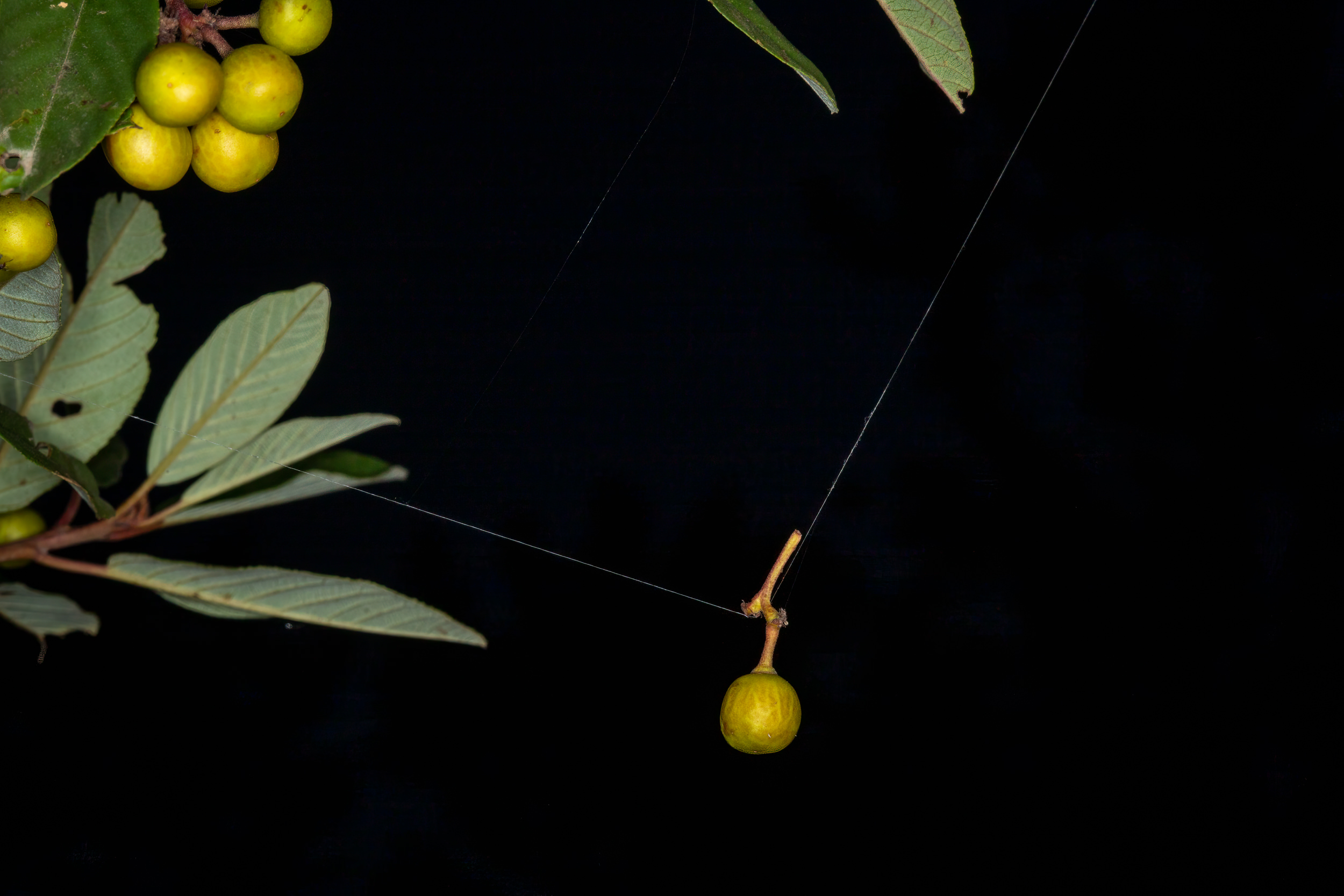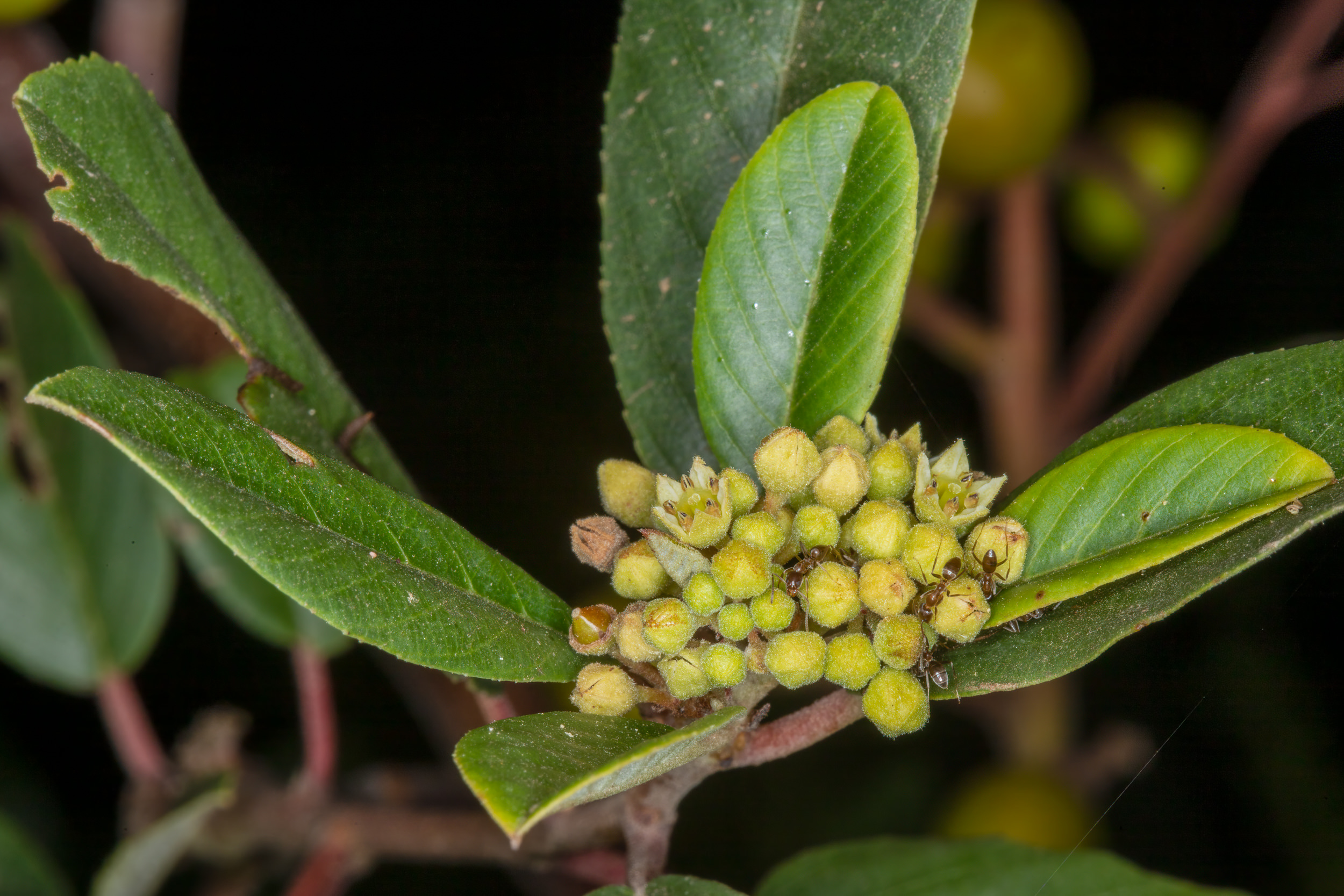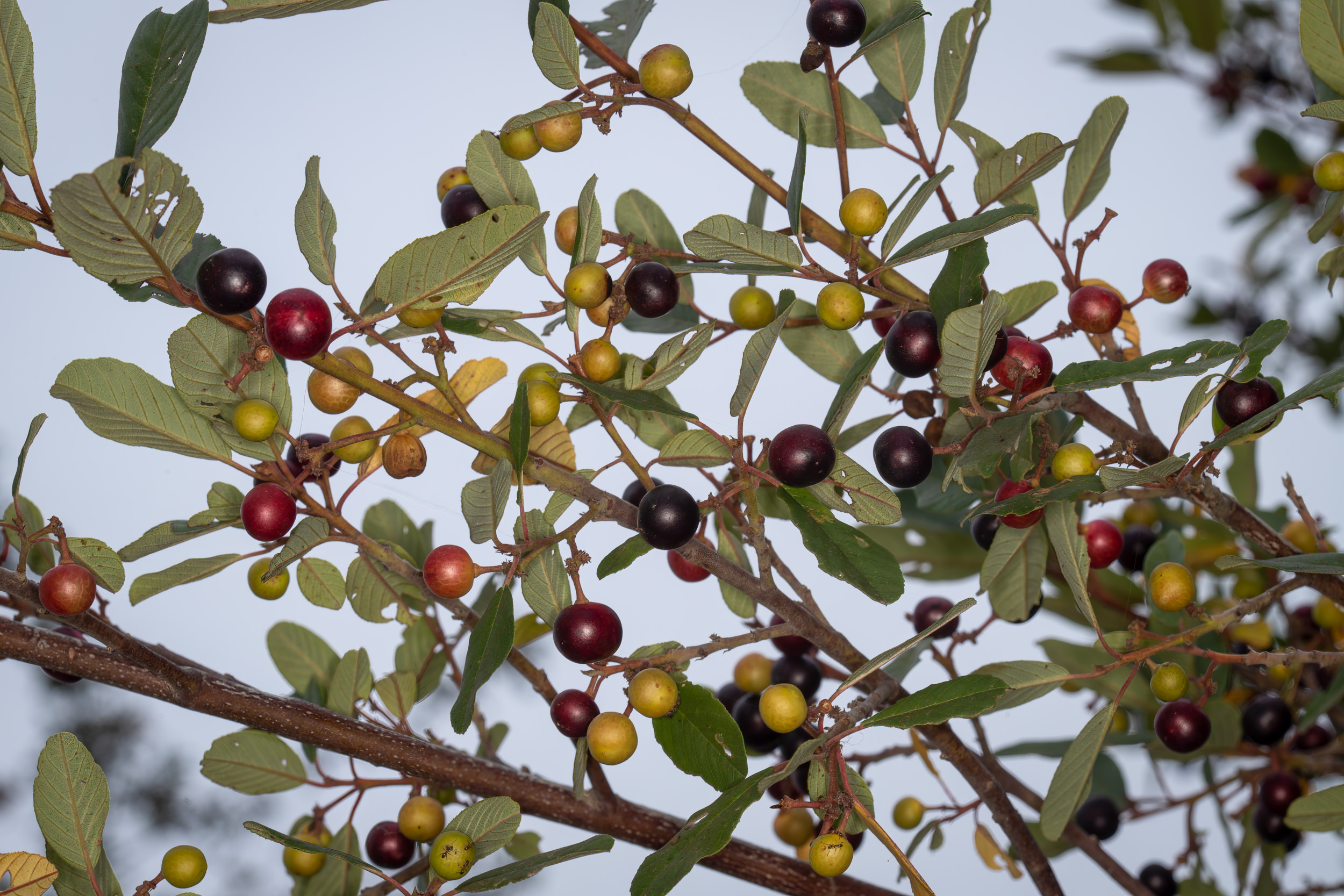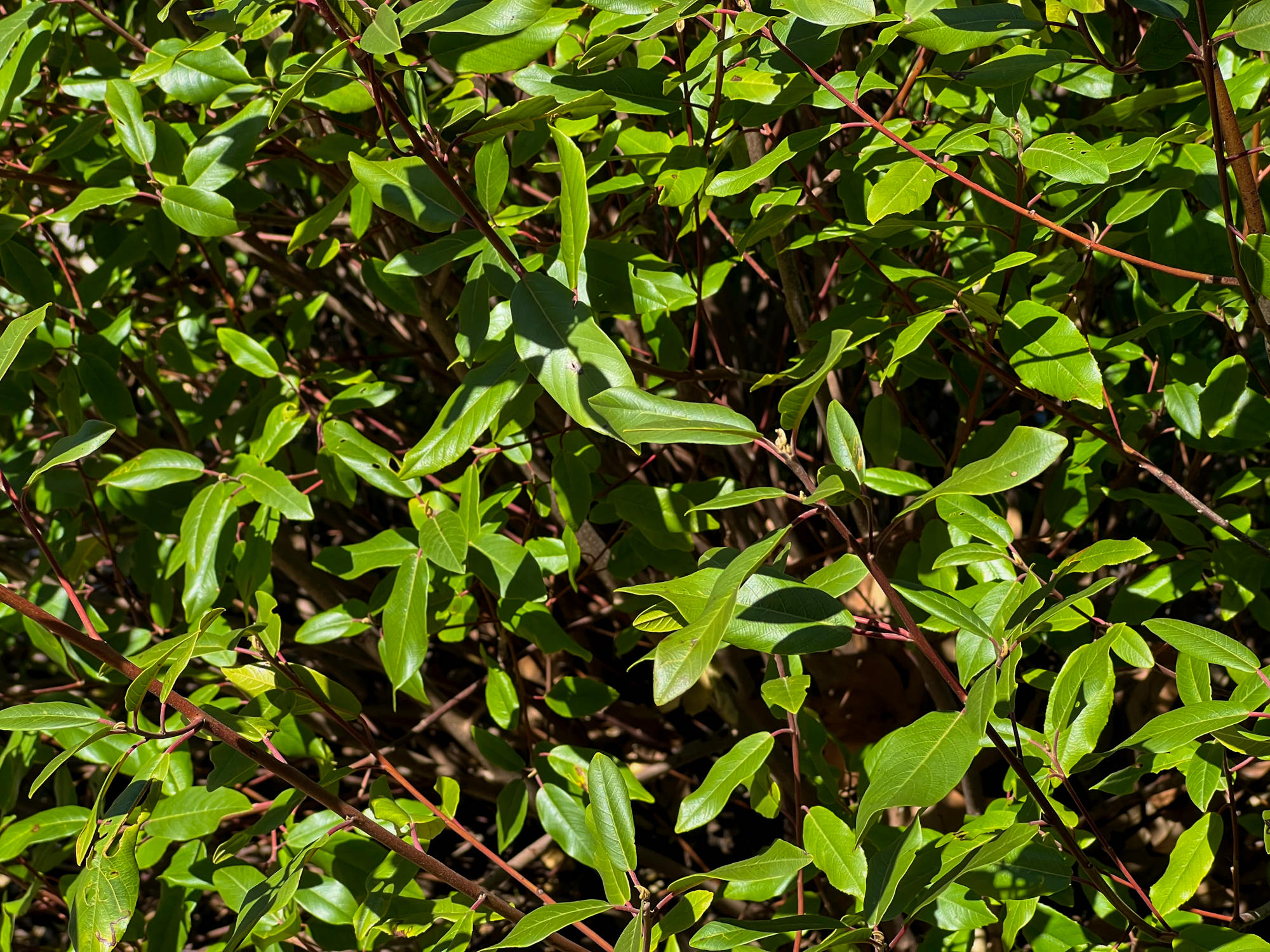California Coffeeberry
- Frangula californica
| Common Name(s): | California Coffeeberry |
| Scientific Name: | Frangula californica |
| Family: | Rhamnaceae (Buckthorn) |
| Plant Type: | Shrub |
| Size: | up to 15 feet |
| Habitat: | Chaparral and coastal sage scrub |
| Blooms: | May to July |
| Fire Response: | Sprouts from stump |
California Coffeeberry - Frangula californica - native to California - is an evergreen shrub ranging from 1-15 feet in height and width. Lots of reddish shoots/branches arising out of the plant's center give the plant an impenetrable appearance. When in flower (usually May to July) - spend a moment looking at the plant and you may note the number and variety of pollinators stopping by to sample the nectar. Pollinated flowers become fruits (drupes) that start out green, transition to red and when ripe are nearly black in color. Birds and deer are known to consume the fruits and disperse the seed in the process. Best places to observe this plant? Chaparral and coastal sage scrub - Newton Canyon is where these images were captured.
This plant is member of the buckthorn family (Rhamnaceae) but deviates in a couple of ways.
Traits of the the Rhamnaceae family: 4 petals, bud scales, alternate OR opposite leaves, and branches with spines.
The botanical name was changed from Rhamnus californica to Frangula californica based upon research in Phylogeny and DNA. Two difference you can see - this plant has 5 petals and no spines on its branches. Name changes take years before guidebooks and nurseries catch up!
There are six subspecies of this plant in California - mostly because the plant evolved in different soil types or local climates. Plants have been around longer than we have adapting to a variety of changes - local and global.
Flowers are tiny, greenish and symmetrical that grow in clusters of 5 to - 20 or more. These flowers are popular with bees, flies, butterflies and hummingbirds. The flowers require a hand lens to see their component parts. Five or six anthers (depending on the number of petals) circle the branched pistil (look hard at image 9).
Alternating narrow to widely elliptic with an acute tip, 1-3 inches long, grow on reddish-tinged flexible branches and petioles. Leaves tend to be adapted for their location. Towards the coast they tend to be thin, and green on both sides of the leaf. Inland, Leaves may be thicker, curl under at the margins, often making use of light colored fine hairs to conserve moisture. Leaf midribs are visibly raised (imagine paper glued onto a popsicle stick). New growth twigs and petioles (where leaves connect with stems) are red or yellow with green mixed in to modulate the color.
Native uses: Chumash Indians aged (more than a year!) the bitter bark and berries for purging and as a treatment for constipation. Chemicals found in the plant are glycosides. These are a class of phenolic compounds that increasing the action of smooth muscle found in hollow organs like the stomach and the large intestine. Other peoples used the leaves to treat poison oak, fruits were eaten fresh and raw or sun-dried by some tribes, while other tribes considered them toxic.
Fire response: This plant germinates from seed and can sprout from root crown.
Link to Calflora.net - the best source of this fascinating information.
CRC World Dictionary of Plant Names says: "Perhaps derived from the Latin frangere, 'to break'." A personal communication from John Kartesz supplied the information that the name refers to its extremely brittle wood. The species alder-buckthorn, Rhamnus frangula, bears a fairly old name, and the bark of that tree contained a glucoside with purgative or laxative qualities that was named frangulin by a chemist named Casselmann. The genus Frangula was published by Philip Miller in 1754.
Need to know more? Click this link to read a better researched article about California Coffeeberry
Contributed by George Sherman
Aster diagram provided by Jenn Deutscher
Link to the artist's website
Featured Plants in the Rhamnaceae (Buckthorn) Family:
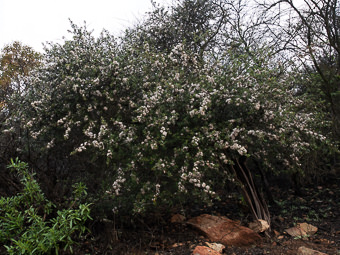
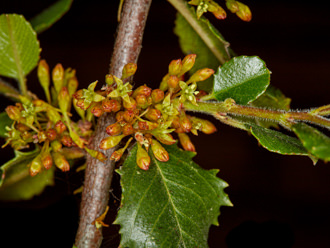
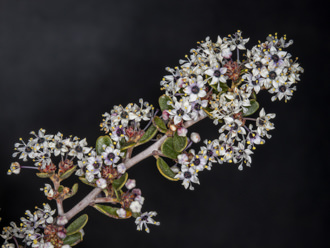
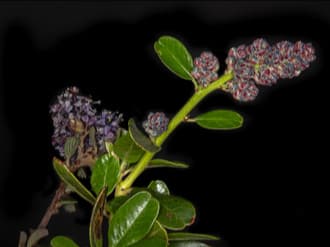
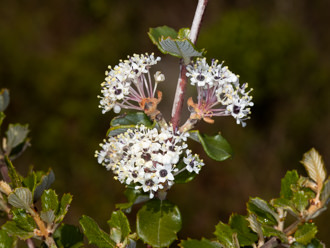
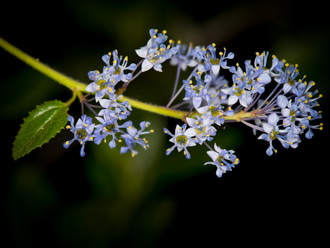
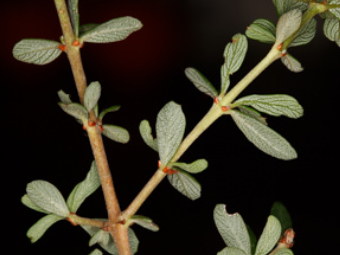
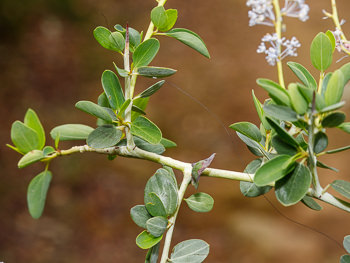
Last modified: August 21 2024 15:18:49.
Number of Images: 17
Image Size Total: 11,632,743
References:
Wildflowers of the Santa Monica Mountains, by Milt McAuleyFlowering Plants: The Santa Monica Mountains, Coastal and Chaparral Regions of Southern California, by Nancy Dale
Chumash Ethnobotany: Plant Knowledge Among the Chumash People, by Jan Timbrook
Leaf Shapes Primer - Botanical Terms for Leaves: - Link

